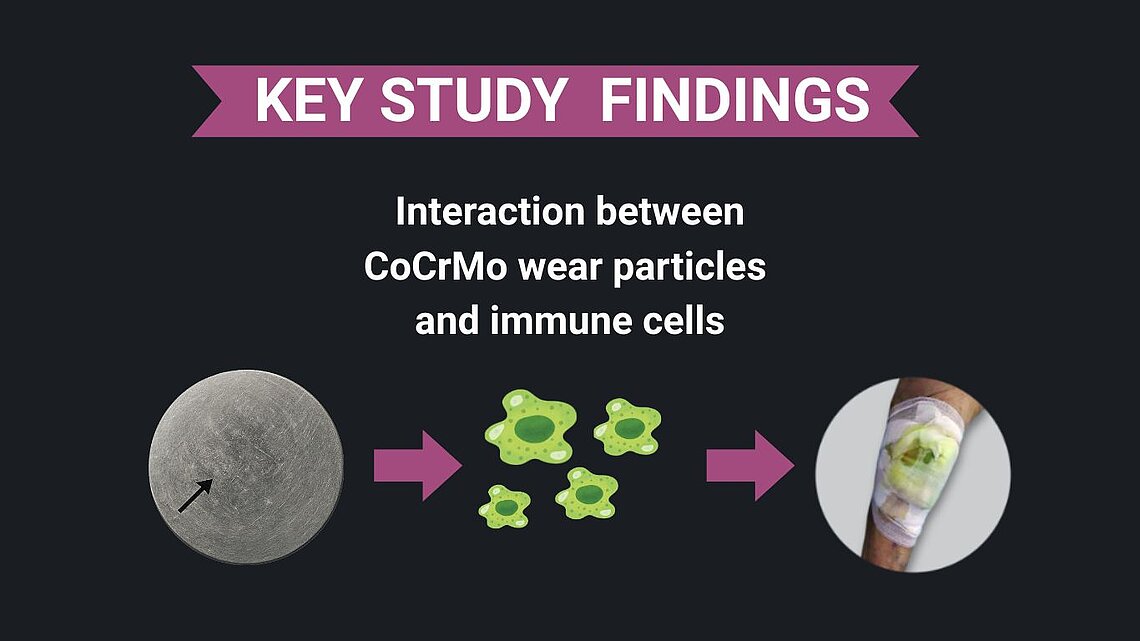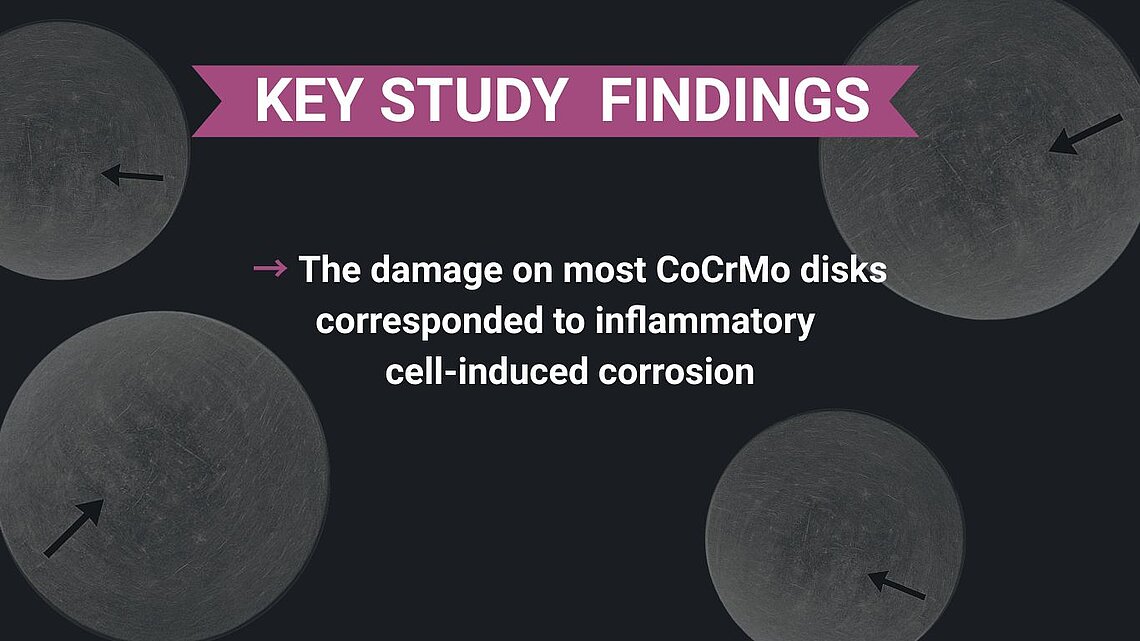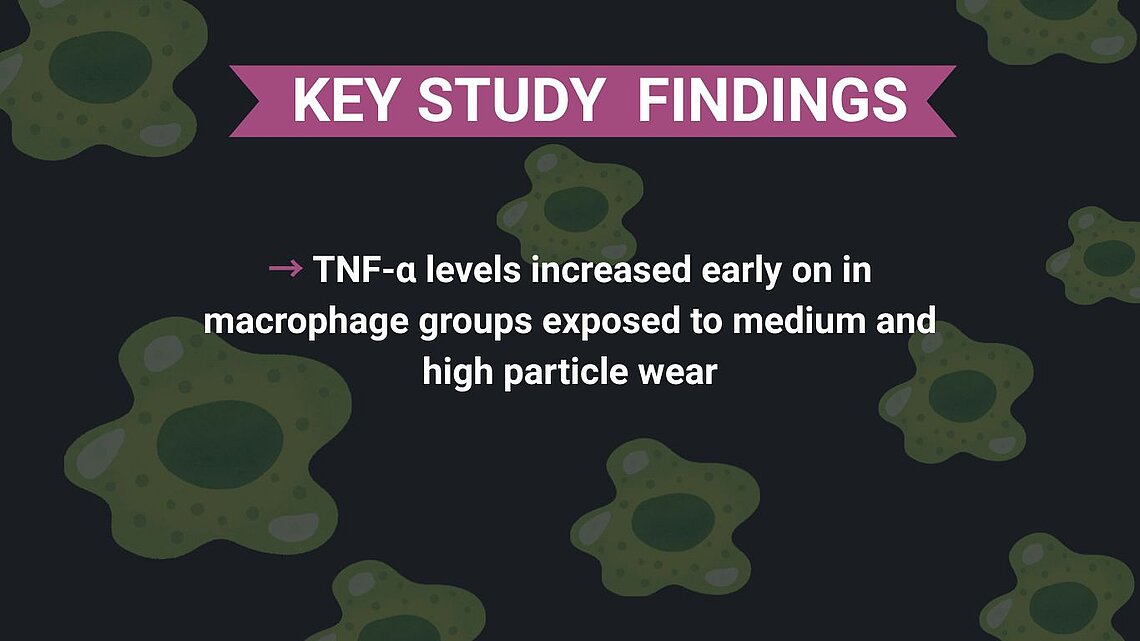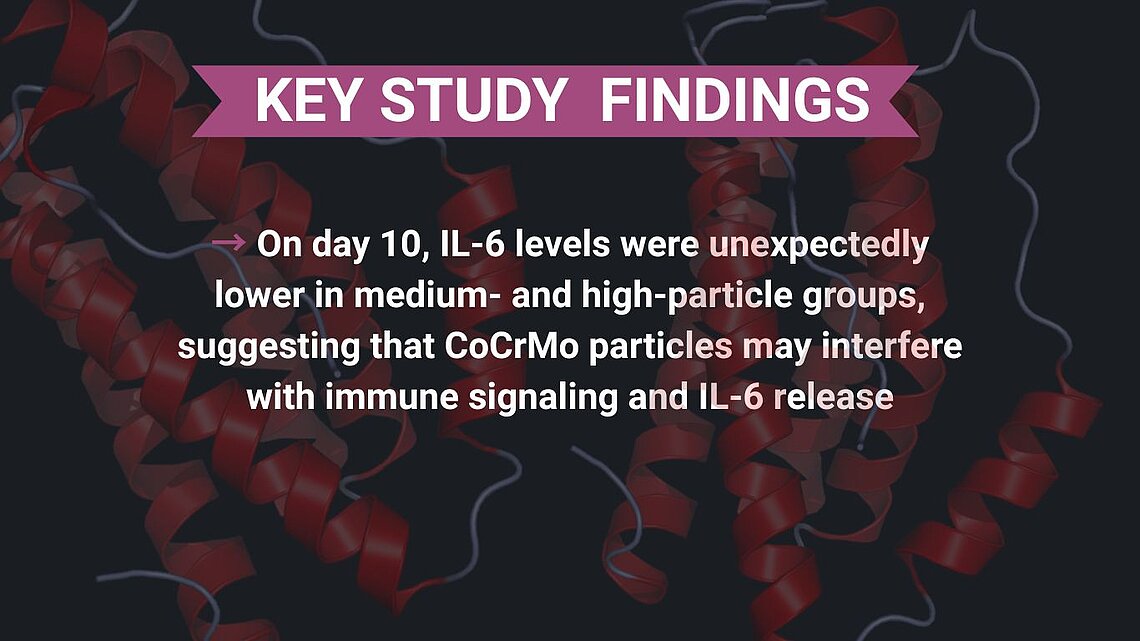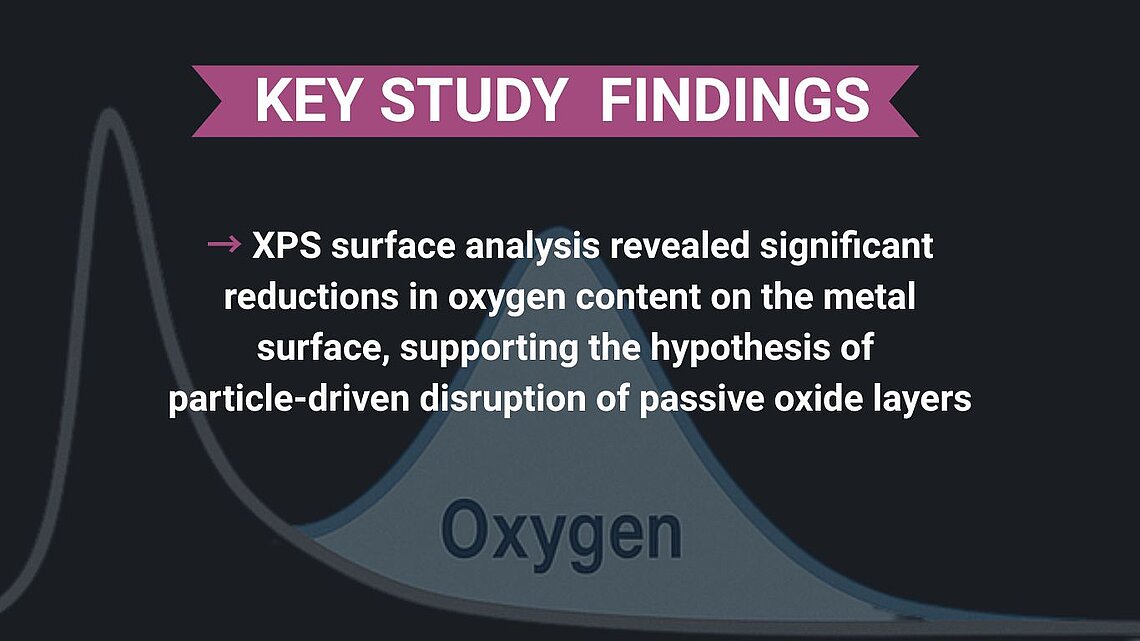How does cobalt-chromium-molybdenum (CoCrMo) wear contribute to cellular corrosion? An in vitro study and its implications for joint replacement
Their outcomes, newly published in the Journal of Arthroplasty, hold especially meaningful implications for knee and hip implant performance.
Over 30 days, the team observed a macrophage-lymphocyte co-culture that simulated the interaction between CoCrMo wear particles and immune cells. In this setup, the macrophages – cultured on CoCrMo disks – were exposed to low, medium, and high concentrations of CoCrMo particles and immune activators, accompanied by a control group.
The results:
- The damage on most CoCrMo disks corresponded to ICIC.
- TNF-α levels increased early on in macrophage groups exposed to medium and high particle wear. (By the end of the trial, these levels had evened out with those exposed to lower particle wear!)
- On day 10, IL-6 levels were unexpectedly lower in medium- and high-particle groups, suggesting that CoCrMo particles may interfere with immune signaling and IL-6 release.
- XPS surface analysis revealed significant reductions in oxygen content on the metal surface — especially at high particle concentrations — supporting the hypothesis of particle-driven disruption of passive oxide layers.
Overall, these data reinforce concerns about immune-mediated corrosion mechanisms in implants made with metallic materials, demonstrate the various potential biological responses to material degradation, and highlight the importance of material selection in managing long-term outcomes.
Dr. Mihalko’s team proposes that particle wear does not accelerate corrosion but facilitates it and other cellular responses. Their research exemplifies the role of wear debris in corrosion and its subsequent impact on CoCrMo alloys in implants, which in turn stresses the need for further research to determine the future viability of these alloys in arthroplasty.
References:
Madison N. Brown, Danielle M. Bryant, Bailey Bond, Harrison Smith, Richard A. Smith, William M. Mihalko. “The Effects of Simulated Cobalt-Chromium-Molybdenum Wear Particles on a Macrophage-Lymphocyte Co-Culture for Evaluating Cellular Corrosion.” J Arthroplasty. doi: 10.1016/j.arth.2025.02.020.

